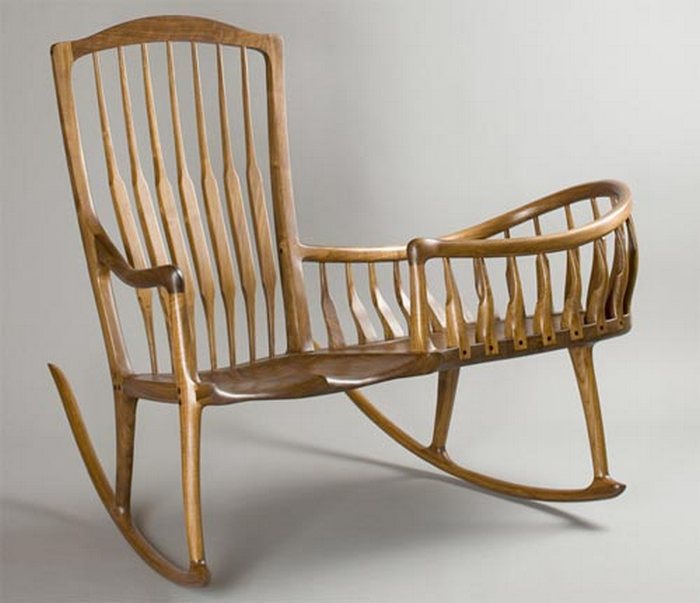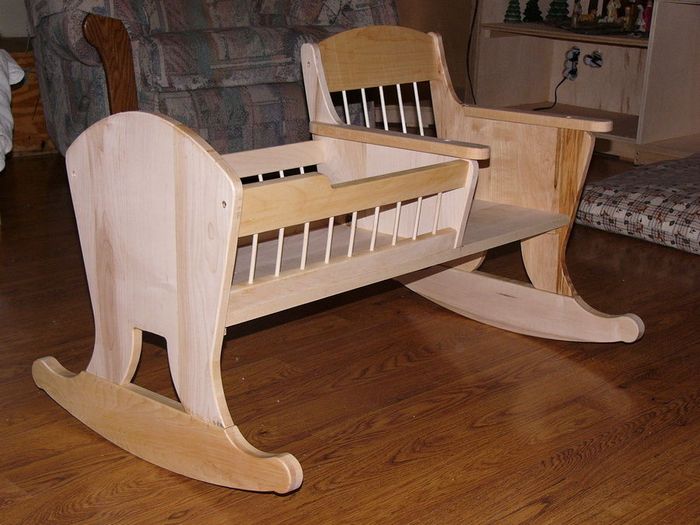Choosing the Right Materials and Tools

Building a rocking chair requires careful consideration of materials and tools to ensure a sturdy, comfortable, and aesthetically pleasing final product. The choice of wood, its properties, and the tools you employ will directly impact the quality and longevity of your rocking chair.
Types of Wood for Rocking Chairs
The type of wood you choose for your rocking chair will significantly affect its strength, durability, and overall appearance.
- Hardwoods: These woods are known for their strength, durability, and resistance to wear and tear. They are ideal for rocking chairs as they can withstand the constant stress of rocking motion. Common hardwoods used for rocking chairs include:
- Oak: Durable, strong, and with a beautiful grain pattern. It is a classic choice for rocking chairs and is known for its longevity.
- Maple: Hard, strong, and resistant to dents and scratches. Maple offers a smooth, refined look and is a popular choice for furniture.
- Cherry: A beautiful hardwood with rich reddish-brown tones that darken with age. Cherry is known for its strength and its ability to be easily worked.
- Walnut: A strong and durable wood with a distinctive dark brown color and beautiful grain patterns. Walnut is often used for high-end furniture due to its beauty and value.
- Softwoods: These woods are generally less durable than hardwoods but are easier to work with. They may be suitable for rocking chairs depending on the design and intended use. Common softwoods include:
- Pine: A lightweight and affordable wood with a soft, workable texture. Pine is often used for less demanding projects, but it may not be as durable as hardwoods.
- Cedar: A fragrant and naturally insect-resistant wood. Cedar is often used for outdoor furniture, but it may not be as strong as hardwoods for rocking chairs.
Essential Tools for Building a Rocking Chair
Having the right tools is crucial for building a rocking chair. This list includes essential hand tools and power tools:
- Hand Tools:
- Hammer: Used for driving nails and securing joints.
- Screwdriver: Used for driving screws and assembling parts.
- Chisel: Used for shaping and carving wood.
- Plane: Used for smoothing and flattening wood surfaces.
- Saw: Used for cutting wood to size. A handsaw, a coping saw, or a jigsaw can be used depending on the specific cuts needed.
- Measuring Tape: Used for accurately measuring wood and ensuring precise cuts.
- Pencil: Used for marking wood and transferring measurements.
- Level: Used for ensuring that surfaces are level and straight.
- Clamps: Used for holding wood pieces together securely during assembly.
- Power Tools:
- Drill: Used for drilling pilot holes for screws and creating holes for dowels.
- Router: Used for shaping edges, creating decorative details, and cutting slots for joints.
- Sander: Used for smoothing wood surfaces and removing imperfections.
- Table Saw: Used for making precise cuts in wood, especially for larger pieces.
Pre-Cut Kits vs. Raw Lumber
When deciding to build a rocking chair, you have the option of using pre-cut kits or working with raw lumber.
- Pre-Cut Kits:
- Pros: Pre-cut kits offer convenience and are a good option for beginners as they come with pre-cut pieces and detailed instructions. They often include pre-drilled holes for easier assembly.
- Cons: Pre-cut kits can be more expensive than working with raw lumber, and you may have less flexibility in customizing the design.
- Raw Lumber:
- Pros: Working with raw lumber gives you greater flexibility in design and allows you to select specific wood species and grades. It can also be more cost-effective than using pre-cut kits.
- Cons: Working with raw lumber requires more time and skill as you need to cut, shape, and join the pieces yourself. It may also require more specialized tools.
Designing the Rocking Chair: How To Build A Rocking Chair

The heart of building a rocking chair lies in the design. It’s not just about aesthetics, but about crafting a piece that’s comfortable, balanced, and durable. This involves carefully considering the dimensions and proportions of the chair, ensuring it fits the intended user’s height and weight, and incorporating design elements that create a unique style.
Determining the Chair’s Dimensions and Proportions
The dimensions of a rocking chair directly influence its comfort and functionality. These dimensions are influenced by the intended user’s height and weight, and the overall design aesthetic.
- Seat Height: This is typically measured from the floor to the top of the seat. A comfortable seat height allows the user’s feet to rest flat on the floor while sitting, and their legs to form a 90-degree angle at the knee. A general rule of thumb is to subtract 17-18 inches from the user’s height to determine the ideal seat height. For example, a person who is 5’10” tall would have a seat height of approximately 19-20 inches.
- Seat Depth: The seat depth is the distance from the front to the back of the seat. A comfortable seat depth allows the user to sit back comfortably without feeling cramped. The ideal seat depth is usually about 18-20 inches, allowing for ample legroom and support for the back.
- Seat Width: The seat width is the distance between the two armrests. A comfortable seat width allows the user to sit comfortably without feeling squeezed. The ideal seat width is usually about 18-20 inches, providing enough space for the user’s hips and thighs.
- Backrest Height: The backrest height is the distance from the seat to the top of the backrest. A comfortable backrest height provides support for the user’s back and allows them to recline comfortably. The ideal backrest height is usually about 24-28 inches, providing adequate support for the lumbar region and the upper back.
- Rocker Length: The rocker length is the length of the curved part of the rocker. This dimension influences the rocking motion of the chair. A longer rocker length creates a more gentle and slower rocking motion, while a shorter rocker length creates a faster and more vigorous rocking motion. The ideal rocker length is usually about 24-30 inches, providing a comfortable and balanced rocking experience.
Considering the User’s Height and Weight, How to build a rocking chair
The comfort and functionality of a rocking chair are directly influenced by the intended user’s height and weight.
- Height: The seat height and backrest height should be adjusted to accommodate the user’s height. A seat that is too low will make it difficult for the user to get in and out of the chair, and a backrest that is too high will make it uncomfortable to recline.
- Weight: The chair’s structural strength should be sufficient to support the user’s weight. The thickness and type of wood used for the chair’s frame should be carefully chosen to ensure it can withstand the weight and stress of use.
Designing a Rocking Chair with a Unique Style
The design of a rocking chair can be as simple or as elaborate as you like. You can incorporate different design elements to create a unique style.
- Shape: The shape of the chair’s frame can be varied to create different styles. You can create a traditional rocking chair with a straight back and curved rockers, or a more modern design with a curved back and straight rockers.
- Materials: The type of wood used for the chair’s frame can also influence its style. You can choose a traditional wood like oak or maple, or a more contemporary wood like walnut or cherry.
- Finish: The finish of the chair can also add to its style. You can choose a natural wood finish, a stained finish, or a painted finish.
- Upholstery: If you want to add a touch of comfort and style, you can upholster the seat and backrest. You can choose from a variety of fabrics and colors to create a look that suits your taste.
How to build a rocking chair – The art of crafting a rocking chair, a timeless comfort, lies in the precision of curves and the balance of weight. From the sturdy frame to the smooth glide, each element contributes to the gentle rhythm that soothes the soul.
A captivating alternative to the traditional design is the wicker swivel rocking chair , offering a unique blend of airy elegance and graceful movement. Whether you choose to embrace the classic or explore the modern, building a rocking chair is a journey of skill and creativity, culminating in a piece that whispers tales of relaxation and comfort.
The art of crafting a rocking chair, with its gentle sway and rhythmic creak, is a testament to human ingenuity. Each piece of wood, meticulously shaped and joined, becomes part of a timeless design that evokes tranquility and reflection. But beyond the comfort and beauty, there lies a darker side, a shadow cast by the unsettling image of the devil’s rocking chair , a symbol of restless spirits and haunting tales.
Yet, despite such chilling associations, the allure of the rocking chair remains, a reminder that even in the face of darkness, the simple act of crafting can bring forth both solace and unease.
